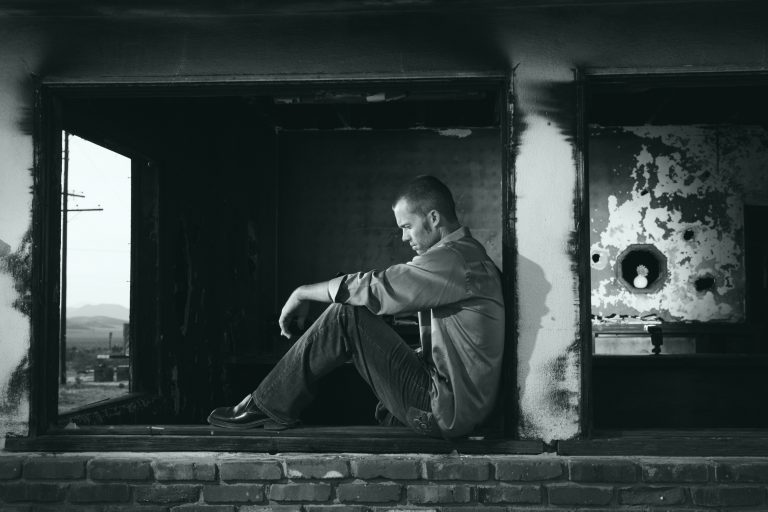You know that scene in what seems like every movie of all time? The one where the main character and their love interest start passionately making out, knocking over glasses, bumping into walls, and frantically discarding their clothing as they head for the bedroom? Then, with literally zero foreplay, they’re suddenly having sex and within about twenty seconds flat, they have simultaneous orgasms and fall back into bed side-by-side all sweaty and satisfied. Serious question: Is there another planet or dimension where that actually happens? It’s not surprising that the world of Hollywood and television don’t offer a more realistic portrayal of sex, but it’s interesting to think about what it might look like if they did.
Picture it. The scene starts off a week before, and follows the main character and their partner through the week leading up to when they have sex. Throughout this week, we watch the particularities of their sexual dynamic, and all the internal and external factors that they have to navigate to arrive at a moment of alignment where sex is even a possibility. On one day, one partner is aroused but the other isn’t. On another, we learn that one partner manages depression and is having a hard day. We continue to watch all the delicate moving parts of attraction, emotional safety, and arousal between the characters, and at no point does it seem fitting for them to spontaneously erupt in passion and begin destroying their home on the way to the bedroom. Finally, it happens. No dishes are broken and no pictures fall off the wall. On a night where the house is clean and their minds are relatively quiet, they tap into a feeling of closeness and one thing leads to another. One partner has an orgasm and the other doesn’t. End of scene.
Shame & the cultural myth of sexual normativity
Under the best circumstances, most of us have a hard time speaking openly about sex and sexuality, and an even more difficult time talking about sexual issues and dysfunctions. As a society, we have a tremendous amount of deeply ingrained shame surrounding sexuality, and yet it’s a critically important aspect of life that affects every one of us. For each individual, we can trace the roots of this shame through a twisting mess of personality, family of origin, community, culture, nationality, ethnicity, religion, and social stigma. The messages we absorb from all these influential entities combine with each of our unique personalities and experiences, and congeal together to form our sexual identities and ideologies. The mythical, oppressive anvil of sexual normativity is suspended above all our heads in some way, and I would be audacious enough to suggest that very few, if any, of us measure up to our own internalized ideal of what a perfect sexual specimen looks or acts like.
We’re constantly battling against a damaging, unrealistic, and idealized social narrative about sex that tells us how we should be relating to it, and what being sexually normal looks like. We should want sex – a lot of it. We should be good at sex, whatever that means. We should easily and spontaneously become aroused and get swept up in passion with our partners. We should place the highest emphasis on penetration, because that’s the ultimate goal of sex, and all other sexually intimate behavior is just foreplay. If we’re men, we should be able to prolong all sexual activity for long periods of time, be strong and sexually proficient, and be masters of both receiving pleasure from our partners, as well as pleasuring them. If we’re women, we should be sexy, but also innocent and wholesome . We should expertly please our partners, but also easily achieve multiple orgasms, regardless of what type of sexual stimulation we’re receiving. And we should do all of this in a manner that doesn’t portray us either as sexually promiscuous or perverse on one hand, or prude and inexperienced on the other.
That’s a short, and very incomplete look at some of the ways that our social conditioning about sex and sexuality heaps dangerous amounts of pressure upon us to live up to unrealistic sexual expectations. For even the most physically and mentally healthy individuals, those sorts of sexual ideals represent a largely unattainable sexual status. But what does all of this mean for those of us with chronic pain?
Before we even consider the unique challenges that chronic pain poses to the way we relate to ourselves and others sexually, most of us already face sexual challenges of some sort. Whether we identify as men, women, non-binary, or any other variation of sex and gender; whether we’re heterosexual, homosexual, bisexual, asexual, pansexual or any other sexual orientation, we all struggle in some way to make sense of our relationship with sex and sexuality. We might be nervous about how we look, anxious about our ability to perform, uncomfortable with intimacy, feel unattractive or abnormal in some way, question our gender or sexual orientation, doubt our capabilities romantically and sexually, are processing a negative or traumatic sexual experience, or perhaps all of the above. Now add all of that shame, uncertainty, insecurity, low self-esteem, and social pressure to the realities of living with chronic pain, and it’s no surprise that a recent study found that 58% of people living with chronic pain also experience some form of sexual dysfunction (Gruenwald et al., 2017).
Those of us managing chronic conditions and pain are already familiar with the effects of shame in our lives, and the pressure to fit into other’s ideas of normal. We may feel like a burden on others and fear rejection over being seen as needy. We may worry about not fitting in or needing special consideration, minimize our symptoms so as to not stand out from others, and stress about being considered weak and whiny, or frauds who are making up our symptoms. Somehow, while managing all of that, our symptoms, and our pain, we’re also tasked with trying to live up to our partner’s, society’s, and our own sexual expectations.
Chronic pain & sex: Two conflicting needs
The specific expectations of what constitutes sexual normalcy varies between genders, societies, cultures, communities, and individuals, and all of these variables affect the sexual ideals that we internalize. What’s significant for those of us living with chronic pain is that we often feel unable to live up to our conditioned ideals of what sexual normativity looks like. From a physical standpoint, we’re challenged to put aside our pain and discomfort to help build a sex positive dynamic in our relationships with ourselves and our sexual partners. Within the context of a relationship, this means the additional pressure of being concerned about letting down our partners. It can worry us that they might become sexually frustrated or resentful because of the effects of pain, fear of pain, medications, exhaustion, and self-consciousness on our libidos. It’s hard to feel sexy when we’re in pain and don’t relate to our bodies positively.
We are told we should want a lot of sex, but how about after a day of unrelenting physical discomfort and pain? How about while experiencing nausea, constipation, decreased libido, or any other of the many side effects from the medications we take to treat our symptoms? How about while struggling with physical and mental exhaustion, anxiety, and depression from bracing ourselves for days, weeks, months, or even years on end against our own bodies as they seemingly betray us? Sex is a natural human drive, no doubt, but when so much of our energy is consumed by just trying to maintain a baseline feeling of ‘okay’, there often isn’t enough remaining energy, or felt sense of safety, to prioritize our sex lives. In fact, the pressure to prioritize sex when we’re fighting for our physical and emotional lives can turn sex from something potentially beautiful, exciting, intimate, connective, and pleasurable, to something burdensome, unpleasant, and scary.
Whether it’s the difficulty of achieving arousal because of current pain, or our fears and experiences that sex will result in pain, there are many obstacles that can get in our way of feeling positive about sexual intimacy. Sometimes, these obstacles can be so severe that we lose the will to continue to try and deal with them, accepting that a life with little to no sexual activity is our fate. This is often accompanied by strain within, or loss of, romantic and sexual relationships, and this can be emotionally devastating. It can also lead to even more internalized shame, because we might feel that our negative feelings about sex and sexuality mean that something is wrong with us.
The need for safety & communication in our sex lives
Note the lack of emphasis placed on safety, communication, intimacy, and comfort in the sexual messaging of our culture. There aren’t many places where we are encouraged to talk to our partners about how we’re feeling, what we need to become aroused, what inhibits our ability to get ‘in the mood’ for sex, and what does or does not feel good for us. The message we receive is that if we’re experiencing difficulty in the area of sexuality in some way, that is a shameful weakness and a moral failure that ought to be managed alone. As a result, we often feel isolated from our partners, fearful of sharing the nuances of our sexual intricacies with them that might cause them to see us as abnormal or unattractive. Instead of providing our sexual and romantic partners with a map to help them understand and navigate our sexual needs, we either quietly bear unpleasant or even downright painful sex, or avoid sex altogether.
The damaging effect of not addressing the sexual issues in our relationships can range from resentment and unfulfilled needs, to break ups and divorces. The tragedy and sadness of watching our relationships suffer from unspoken problems in sexual dynamic are made all the more painful because in many cases, they can be avoided. When we can recognize the unhealthy influence of culturally driven ideas of sexual normalcy, and reclaim our own sexuality, we have the opportunity to broaden and deepen our sexual relationships with ourselves and our partners.
References
Gruenwald, Ilan, et al. “Sexual dysfunction in patients with chronic pain.” Urology & Nephrology Open Access Journal, vol. 4, no. 6, 2017, pp. 177-181. MedCrave, https://medcraveonline.com/UNOAJ/sexual-dysfunction-in-patients-with-chronic-pain.html.





